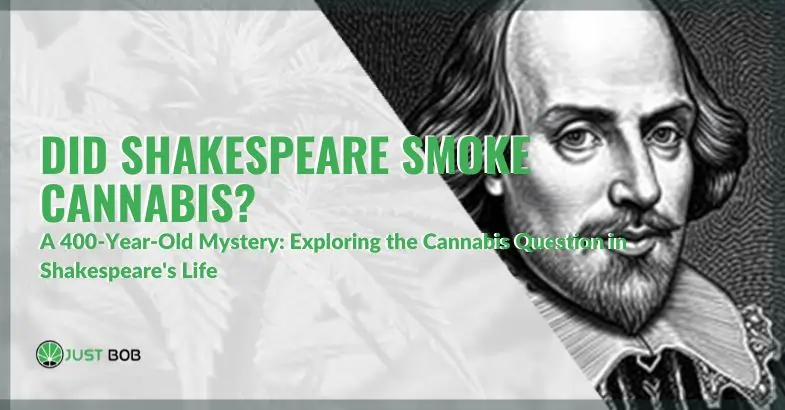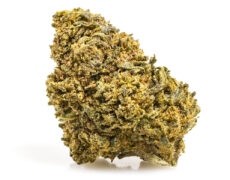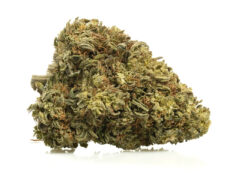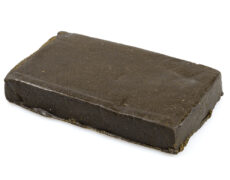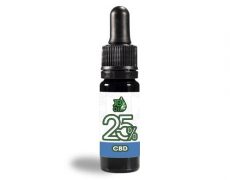Published on: 11/04/2025
A 400-Year-Old Mystery: Exploring the Cannabis Question in Shakespeare’s Life
The realm of William Shakespeare, a figure universally lauded as one of history’s most influential writers, continues to fascinate and intrigue individuals across the globe. For centuries, scholars, literary aficionados, and curious minds have delved into the depths of his life, seeking to unravel the enigmatic tapestry of influences and experiences that molded his unparalleled literary contributions.
Among the myriad questions that persistently arise, one particularly provocative inquiry has captured considerable attention: did Shakespeare, the Bard of Avon, experiment with cannabis?
Before delving into the historical evidence, it’s important to contextualize this question within a modern understanding of cannabis. Today, we recognize a spectrum of cannabis products, notably including ‘cannabis light‘. This legally available form is characterized by its very low THC content and high concentration of CBD, distinguishing it sharply from marijuana typically associated with psychoactive effects. We’re talking about products such as CBD oil, CBD buds or legal hash, which are now available in all cannabis light shops.
This contemporary distinction is crucial because it highlights the complexity inherent in discussing ‘cannabis’ across different eras. What we understand as cannabis today, with its varied forms and legal classifications, differs significantly from the likely availability and perception of cannabis in Elizabethan England. Therefore, when exploring the possibility of Shakespeare’s cannabis use, it’s essential to remember that the historical context was vastly different, and the type of cannabis potentially accessible to him, if any, would have been understood and utilized in ways that do not directly correlate with modern cannabis products like ‘cannabis light’.
In this article, Justbob aims to explore the available evidence surrounding this intriguing question purely for informational purposes, without suggesting or endorsing cannabis consumption, which remains subject to legal restrictions in various countries.


Forensic Evidence Unearthed: Cannabis Residues in Pipes from Shakespeare’s Era
The genesis of the modern debate surrounding Shakespeare and cannabis can be traced back to a meticulous scientific study conducted in the early years of the 21st century. This research endeavor centered on the analysis of a collection of fragmented clay pipes. These artifacts had been carefully excavated from various archaeological sites within Stratford-upon-Avon, a location of immense historical significance due to its association with William Shakespeare.
Notably, the excavation sites included the very garden of New Place, Shakespeare’s residence during the latter part of his life, lending particular weight to the findings. To ascertain the nature of substances previously smoked in these centuries-old pipes, researchers employed a highly sensitive and sophisticated analytical technique known as gas chromatography-mass spectrometry, or GC-MS. This method is widely recognized for its capacity to identify and quantify minute traces of chemical compounds within a sample.
The results of the GC-MS analysis were indeed revealing. Scientists successfully detected residues of a variety of substances, providing a snapshot into the smoking habits of individuals in Shakespeare’s time. Among the substances identified, cannabis emerged as a significant finding, being detected in multiple pipe samples. Of particular interest, cannabis residues were found in pipes originating from the excavation at New Place, Shakespeare’s home.
This discovery immediately sparked considerable speculation, raising the intriguing possibility that the celebrated playwright himself might have been a consumer of cannabis.
Further analysis also revealed the presence of nicotine in the pipe fragments. This finding is consistent with historical records indicating the growing popularity of tobacco smoking in England following its introduction from the Americas. Interestingly, and more controversially, the study also reported the detection of cocaine traces in some of the analyzed pipes. Cocaine, derived from coca leaves, was not as widely accessible as tobacco or cannabis, making its presence in Elizabethan pipes a more unexpected discovery. It is crucial to note, however, that none of the pipe fragments exhibiting cocaine residues were directly linked to Shakespeare’s property.
The identification of these diverse substances – cannabis sativa, nicotine, and cocaine – within the clay pipes provides a fascinating glimpse into the array of plant-based stimulants available and potentially utilized in Elizabethan England. These substances may have served various purposes, ranging from recreational enjoyment to medicinal applications, reflecting the complex interplay between human culture and psychoactive plants throughout history. However, it remains imperative to interpret these findings with a degree of scientific caution.
While the detection of cannabis in pipes from Shakespeare’s garden is undeniably intriguing, it does not constitute definitive proof that Shakespeare himself was a cannabis smoker. The mere presence of residue indicates past use within the pipes but cannot confirm the identity of the smoker, the frequency of consumption, or the specific intent behind it.
New Place, as a historical residence, was not exclusively occupied by Shakespeare and his immediate family. Over time, the property was inhabited by subsequent residents and even served as an inn at one point, increasing the likelihood that the pipes could have belonged to individuals entirely unrelated to Shakespeare. Therefore, while the possibility of Shakespeare’s cannabis use remains a captivating subject for speculation, it is essential to acknowledge the inherent limitations of the forensic evidence and avoid drawing definitive conclusions based solely on these findings.
Read also: Here are the marijuana museums in Europe
Elizabethan England and the Enigma of Cannabis Use: A Historical Perspective
To properly contextualize the discovery of cannabis residues in pipes associated with Shakespeare’s era, it becomes crucial to delve into the broader historical and cultural landscape of substance use during Elizabethan England.
While the burgeoning popularity of tobacco is well-documented, following its introduction from the New World, the prevalence and nature of cannabis use in England during this period remains a less illuminated area of historical inquiry. It is widely acknowledged that hemp, a non-psychoactive variety of cannabis, was extensively cultivated throughout England during the Elizabethan era and earlier. Hemp served as a vital industrial crop, providing essential fibers for the production of rope, sails for ships, textiles for clothing and household goods, and various other practical applications. However, the historical record offers considerably less clarity regarding the recreational or medicinal use of psychoactive cannabis during this time.
Existing historical evidence suggests that, unlike tobacco which rapidly gained widespread acceptance and social integration, the smoking of psychoactive cannabis was not a common or openly acknowledged practice in Elizabethan England.
This is not to say that cannabis was entirely unknown or inaccessible. Some historians speculate that certain segments of Elizabethan society might have indeed experimented with cannabis, particularly individuals with occupations or social positions that facilitated exposure to foreign cultures and practices.
Travelers, for instance, venturing to distant lands, might have encountered cannabis use in different cultural contexts and potentially introduced it to England upon their return. Apothecaries, as practitioners of medicine and pharmacology, might have possessed knowledge of cannabis’s potential medicinal properties and perhaps utilized it in certain preparations, although detailed records of such usage are scarce for this specific period in England. Individuals within intellectual or artistic circles, constantly seeking new experiences and avenues for inspiration, might also have been among the early experimenters with cannabis, mirroring patterns observed in other historical and cultural contexts. After all, throughout history art and cannabis have often crossed paths.
England’s expanding trade networks during the late 16th and early 17th centuries undeniably facilitated the exchange of goods and ideas across continents. It is therefore plausible that cannabis products, including those with psychoactive properties, could have reached England through these international exchanges.
However, the crucial point remains the lack of substantial historical documentation to corroborate the notion that cannabis smoking was a widespread or socially accepted practice among the general Elizabethan population. Furthermore, there is limited evidence linking cannabis use directly to creative pursuits or intellectual endeavors during this period in England, unlike later periods where such associations became more prominent. The absence of explicit historical records does not definitively rule out the possibility of clandestine or localized cannabis use. However, it does underscore the need for caution when extrapolating from limited forensic evidence and the importance of grounding any interpretations within the broader context of available historical and cultural information.
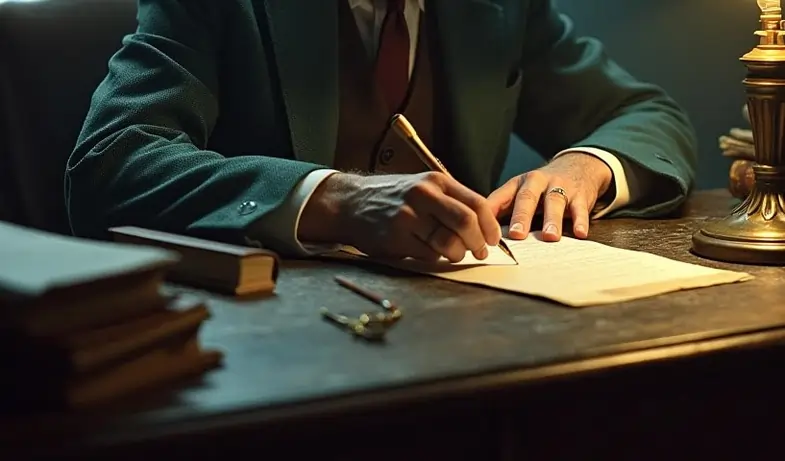

Sonnet 76 and the “Noted Weed”: Deciphering Literary Clues or Misinterpretations?
Beyond the tangible evidence of chemical analysis from clay pipes, proponents of the theory suggesting Shakespeare’s cannabis use have also sought to find corroborating evidence within his literary works themselves. One particular passage that has garnered significant attention and interpretation in this context is found in Sonnet 76.
In this sonnet, Shakespeare pens the lines: “Why with the time do I not glance aside / To new-found methods and to compounds strange? / Why write I still all one, ever the same, / And keep invention in a noted weed”.
These verses have been subjected to various interpretations over the centuries, but some contemporary readers and researchers have proposed a novel reading, suggesting that the phrase “noted weed” might be a veiled reference to cannabis and its purported ability to inspire creativity.
According to this interpretation, “weed,” in this specific context, is not simply a general term for an unwanted plant, but rather a deliberate, slightly coded allusion to cannabis. The adjective “noted,” in this reading, implies that this particular “weed” is known or recognized for a specific quality, which proponents argue could be its psychoactive properties and its association with enhancing “invention” or creative inspiration.
Furthermore, the preceding lines about “compounds strange” are also interpreted as potentially alluding to exotic or mind-altering substances, further strengthening the cannabis hypothesis in the eyes of its proponents.
However, it is crucial to recognize that such interpretations are far from universally accepted and remain highly contested within the broader field of Shakespearean scholarship. A more traditional and linguistically grounded reading of Sonnet 76 offers a significantly different perspective, rooted in the linguistic norms and common usages of words during the Elizabethan era.
In Shakespeare’s time, the word “weed” was frequently employed to refer to clothing or attire, a usage that is less common in modern English but well-documented in historical texts. Similarly, the term “invention” in Elizabethan English often denoted poetic creativity, the faculty of imaginative composition, and the generation of new literary ideas.
Therefore, a more conventional and historically informed interpretation of Sonnet 76 suggests that Shakespeare is likely reflecting upon his own literary style and its consistent nature. In this reading, he is questioning why he does not deviate from his established methods (“new-found methods”) or incorporate unfamiliar stylistic elements (“compounds strange”) into his writing.
Instead, he acknowledges that he continues to write in a consistent manner (“still all one, ever the same”) and maintains his creative originality (“invention”) within his characteristic style, which he metaphorically refers to as a “noted weed,” meaning a recognizable or distinctive style of literary “clothing” or expression. “Compounds strange” in this context would more likely refer to unfamiliar poetic structures, rhetorical devices, or stylistic innovations rather than psychoactive substances or narcotics.
The debate surrounding the interpretation of “noted weed” and Sonnet 76 highlights the inherent challenges of interpreting literary texts across vast spans of time and evolving linguistic landscapes. While the notion of a cannabis-influenced Shakespeare might hold a certain appeal for contemporary audiences, particularly those familiar with modern associations between cannabis and creativity, it is essential to approach such interpretations with critical rigor and historical sensitivity.
Navigating the Limitations: The Circumstantial Nature of the Evidence and Unanswered Questions
In the final analysis, it must be acknowledged that the question of whether William Shakespeare smoked cannabis remains fundamentally unresolved. Despite the intriguing discovery of cannabis residues in clay pipes unearthed from his era, including those found at his residence, and the speculative interpretations of certain literary passages, definitive proof of his personal cannabis use remains elusive.
The evidence currently available is, by its very nature, circumstantial. It hints at a possibility, sparks curiosity, and fuels debate, but it does not provide the conclusive answers that would be necessary to transform speculation into established fact. The ambiguity inherent in literary interpretations, the limitations of forensic evidence in definitively linking the pipes to Shakespeare himself, and the gaps in our historical understanding of cannabis use in Elizabethan England all contribute to the enduring uncertainty surrounding this question.
To definitively ascertain whether Shakespeare smoked cannabis, one would ideally require direct, unambiguous evidence, such as a personal diary entry, a contemporary account from a reliable source explicitly stating his cannabis use, or perhaps a more direct chemical analysis of personal artifacts definitively attributable to him and only him. However, such evidence is, realistically, unlikely to surface centuries after his death.
The ongoing debate surrounding Shakespeare and cannabis, despite its inconclusive nature, serves to highlight the enduring fascination with his life and the persistent human desire to understand the multifaceted factors that contributed to his unparalleled literary achievements. Whether through meticulous forensic science, in-depth historical research, nuanced literary analysis, or interdisciplinary approaches, scholars and enthusiasts alike continue to seek new insights into the mind, experiences, and creative processes of the Bard of Avon.
While it is improbable that a definitive answer regarding his potential cannabis use will ever definitively emerge, the very act of engaging with this question, exploring the available evidence, and debating its implications enriches our understanding of Shakespeare’s historical context, the complexities of interpreting the past, and the enduring allure of literary mystery. The question itself becomes a lens through which we can examine Elizabethan culture, the evolving relationship between humans and psychoactive substances, and the enduring enigma of creative genius.
Read also: What is the cannabis origin ? Here is its history
Shakespeare’s Enduring Genius: Beyond Speculation, A Legacy of Literary Brilliance
Ultimately, regardless of whether William Shakespeare experimented with cannabis, his towering literary legacy remains undiminished and his status as a literary giant firmly secured. The enduring power of his plays, sonnets, and poems transcends any speculation about his personal habits or potential substance use.
His works continue to captivate, move, challenge, and inspire audiences across cultures and generations, a testament to the universality and timelessness of his artistic vision. Shakespeare’s genius lies not in any potential external stimulants he might have employed, but in his profound understanding of human nature, his unparalleled command of language, his dramatic artistry, and his ability to articulate the most profound and enduring aspects of the human condition.
His exploration of love, loss, ambition, jealousy, justice, mercy, and the entire spectrum of human emotions resonates as powerfully today as they did in the Elizabethan era. His characters, from Hamlet to Macbeth, from Juliet to Cleopatra, remain archetypal figures in the Western literary canon, embodying complex psychological depths and enduring human traits.
The debate surrounding cannabis and Shakespeare, while intriguing, should not overshadow or detract from the fundamental reality of his artistic brilliance. Whether or not he ever found inspiration in “a noted weed,” his legacy is irrevocably etched in the annals of literary history as one of the most significant and influential writers of all time. His works stand as timeless monuments to the power of human creativity, observation, intellectual depth, and linguistic mastery.
That’s all. We hope we’ve satisfied your curiosity about Shakespeare and we look forward to seeing you in our next articles here on Justbob!
Did Shakespeare Smoke Cannabis?: takeaways
Key Takeaways:
- Recent forensic analysis of 400-year-old clay pipes unearthed from Stratford-upon-Avon, including Shakespeare’s residence, New Place, has revealed traces of cannabis. This discovery has ignited debate regarding the possibility of William Shakespeare’s cannabis use and its potential influence on his creative process. While intriguing, it’s crucial to note that this evidence is circumstantial and does not definitively prove Shakespeare’s personal consumption.
- The historical context of Elizabethan England provides a complex backdrop. Hemp cultivation was common for industrial purposes, but evidence for recreational cannabis use during Shakespeare’s time is sparse. While trade routes could have introduced cannabis to England, its prevalence and social acceptance remain uncertain. Therefore, assuming Shakespeare had easy access or widespread cultural acceptance of cannabis use requires careful consideration of limited historical records.
- Literary interpretations suggesting cannabis references in Shakespeare’s sonnets, particularly Sonnet 76’s “noted weed,” are highly contested. Scholars emphasize that “weed” could refer to clothing and “invention” to poetic creativity in Elizabethan English. Thus, attributing drug use to Shakespeare based solely on textual analysis is speculative. The debate underscores the challenges of interpreting historical texts through a modern lens and the need for linguistic and historical accuracy.
Did Shakespeare Smoke Cannabis?: FAQ
Does the discovery of cannabis in pipes definitively prove Shakespeare smoked it?
No, the discovery of cannabis residues in pipes from Shakespeare’s era, including some found at his residence, does not definitively prove that Shakespeare personally smoked cannabis. While it indicates cannabis was present in pipes from that time and place, it is circumstantial evidence. The pipes could have belonged to other inhabitants of New Place, visitors, or even individuals who lived there after Shakespeare. Forensic evidence, while intriguing, is not conclusive proof of Shakespeare’s personal habits. Further direct evidence would be needed to confirm his cannabis use, which is unlikely to surface after centuries. Therefore, the discovery is interesting but remains speculative regarding Shakespeare’s personal consumption.
Is there historical evidence that cannabis was commonly used in Elizabethan England for recreational purposes?
Historical evidence suggests that while hemp, a non-psychoactive variety of cannabis, was widely cultivated in Elizabethan England for industrial purposes, evidence for recreational cannabis use is sparse. Tobacco smoking was becoming increasingly popular, but there is limited documentation to indicate that psychoactive cannabis smoking was a common or openly accepted practice. Some historians speculate that certain individuals, such as travelers or apothecaries, might have encountered and experimented with cannabis, but there is no substantial evidence to suggest widespread recreational use among the general population or within intellectual circles during Shakespeare’s time. Therefore, assuming common recreational cannabis use in Elizabethan England based on current historical records is not well-supported.
How should we interpret literary references like “noted weed” in the context of potential cannabis use by Shakespeare?
Literary references like “noted weed” in Sonnet 76 should be interpreted cautiously and within their Elizabethan linguistic and cultural context. While some propose “noted weed” as a coded reference to cannabis, traditional scholarship suggests “weed” likely referred to clothing or attire in Elizabethan English, and “invention” to poetic creativity. Thus, a more conventional interpretation sees Shakespeare discussing his consistent literary style rather than alluding to drug use. Attributing drug use based solely on ambiguous textual references is speculative and risks misinterpreting historical language. Literary analysis requires rigorous attention to historical context and linguistic norms, avoiding modern connotations imposed onto historical texts.

